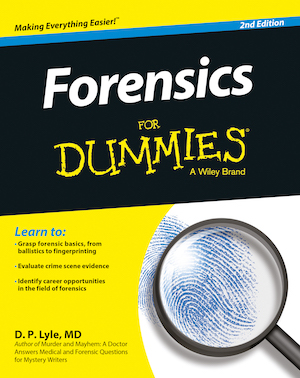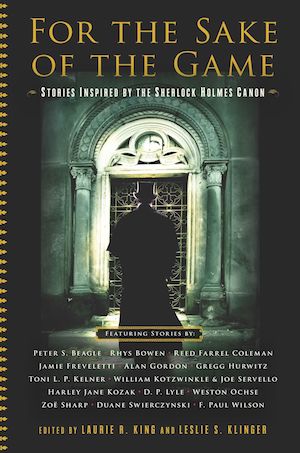On this date in 1922, Howard Carter discovered the entrance to the tomb of the boy king Tutanhhamun, an historical figure that has been the subject of many investigations, several movies, many works of both fiction and nonfiction, and a parody by comedian Steve Martin. His place in world history is well-established.

He was born around 1341 BC and ascended to the position of Egyptian pharaoh of the 18th dynasty in about 1333 BC at the ripe old age of nine. He held that position until his death a decade later. One of the mysteries surrounding King Tut is his parentage. His father might have been Amenhotep III or maybe Akhenaten or maybe someone else. His mother is equally controversial with some believing that she was Queen Tiye and others that she was Queen Kiya. This controversy continues and we may never know the truth.
There is also a great deal of speculation about what caused his death at such an early age. Everything from accidents, to medical problems, to murder have been postulated. In the search for these answers his body has been x-rayed several times and a CT scan has been performed at least once.

One of the x-rays showed a dense calcification at the posterior base of the skull and many postulated that this could be from a traumatic hematoma. The problem is that calcification (the addition of calcium to a scar, more or less turning it to bone) takes many months if not years. This would mean that he would have had to survive quite some time after the injury if indeed a blow to the back of the head caused this calcified area. In view of that, it is unlikely that a blow to the head in this region is what caused his death. Yes, some subdural hematomas that follow blunt trauma to the head can initially be small and nonlethal for many months and then can expand and cause death. But this would require the presence of a very large hematoma or a large amount of bleeding into or around the brain and apparently none of this was found in any of the examinations of the young man’s body. I think a blow to the head is very unlikely to have caused his death.

When discovered, his left femur (thigh bone) was fractured. Though this is a serious injury and can indeed lead to death from bleeding or from later infection or even from blood clots that form in the leg, break loose, and travel to the lungs as pulmonary emboli, many believe that the fracture of the femur occurred during the embalming process and was not a pre-mortem event. Again, it is unlikely that this was the cause of his death.
Others have suggested that he was poisoned, drowned, strangled, or that some other method of murder was used. There is no evidence to support any of these theories but they are interesting.
As far as a natural event causing his death, this is entirely possible but again there is no way of knowing. He was a very unusual looking young man. He had very large front teeth with a massive overbite and an elongated head, both of which were characteristics of his ancestors. He also apparently had a cleft palette and some degree of scoliosis. All of these findings could point to some musculoskeletal or connective tissue disorder such as Marfan’s syndrome. Marfan’s is a connective tissue problem where there is weakness of certain tissues. The joints tend to be loose, the palette tends to be high and arched, the lenses of the eyes can be displaced leading to visual difficulty, and the aorta can be weak and expand into an aneurysm that can rupture and prove deadly. Could this have happened to the young King Tut? Since the CT scan showed no evidence of an aortic aneurysm this is very unlikely if not impossible.
And so the mystery remains.
The Death of King Tut
Tutankhamun-Cause of Death
Mummification is one of the three main ways a body will change after death. The most common is decay, or putrefaction. This is a process mediated by bacteria and these bacteria prefer warm and moist environments. Most of the bacteria that cause decay of a corpse come from within the body, specifically the G.I. tract.
Under certain circumstances a body may undergo adipocere formation. Here the body takes on a waxy and mannequin like appearance. This is caused by certain acids and alkalis in the environment reacting with the body fats in a process similar to soap making. Once this process is complete, the body will appear like a pale white or grayish waxy doll.
For a body to undergo mummification, moisture must leave the body fairly quickly and leave behind an environment that is not friendly to bacteria. This can happen with a body dumped in a hot dry desert or one that is left on the hillside at a very high elevation where the air tends to be more moisture-free are even in bodies that are dumped into cool dry basements or closed up in the building crawl spaces. The bottom line is that a dry environment is essential for mummification.
The Egyptians were masters of the mummification process and Egypt’s hot and dry climate made their job much easier. Mummification follows from their basic religious beliefs in an afterlife where the person would need his body on the other side. By mummifying the body, it is protected, hopefully for all time. Since we have found mummies that are thousands of years old and are still incredibly well preserved, they seem to have accomplished their goal. But how did they go about doing it?
The process really addressed three goals: removal of the internal organs, dehydration of the body, and preservation of the tissues. The removal of the internal organs was essential to prevent decay since corpse decay begins inside the body. The ancient Egyptians did not have the knowledge of exactly what the decay process was or that it was mediated by bacteria or that these bacteria needed warmth and water, but rather they made the empiric observation that the internal organs decayed readily and their removal would slow or halt this process. They tended to remove all of the intra-abdominal organs, and were quite elegant at removing the brain through the nose or through small holes drilled of the skull, but they almost invariably left the heart behind. The lungs would be taken, but not the heart, indicating that it held great importance to them. The removed organs would be preserved by wrapping them in oil or resin soaked lenin and placed in ornamental jars around the tomb. I imagine this was done so that when the individual awakened on the other side he could simply reinsert his organs and carry on.
The next issue was to dry out the body. This removal of moisture from the tissues prevented bacterial growth and decay. They used various salts and oils and other solutions to accomplish this. Things such as myrrh, salt, natron (a combination of various sodium-containing compounds), mineral spirits such as turpentine, and other dehydrating herbs were used. Linens, soaked in resins, cedar and other oils, and other chemicals, were stuffed into the body cavities. These helped dehydrate the body and likely had some antibacterial effects.
The bodies were typically wrapped in linen soaked with oils and resins and sometimes beeswax or plaster was placed over the outside to serve as a final protective coating.
I imagine each mummy maker at his favorite technique and chemicals.
Making an Ancient Egyptian Mummy
Mummification in Egypt: An Overview




























